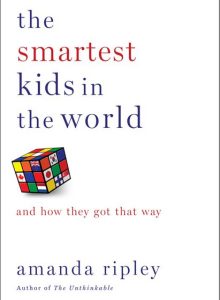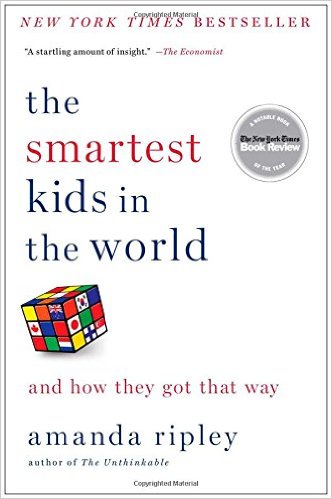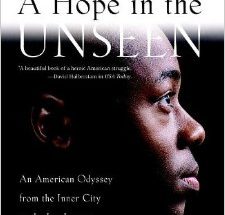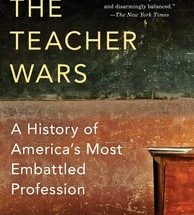The debate over public education in America has become so politicized, it’s almost traumatic to follow.
It’s exactly this world that Amanda Ripley wanted to “wander off” from in writing her book, “The Smartest Kids in the World.” She saw a debate so “nasty, provincial and redundant” that it required a “blatant escape attempt.”
Who can blame her?
Ripley becomes obsessed with a single chart, which is the foundation for her entire book. The graph maps out the education performance of major western countries over the past 50 years. U.S. progress shows a flat line, while other countries experienced great rises or falls.
Finland, for instance, showed massive gains, while Norway, a demographically similar country, showed great declines. This contradiction seemed to challenge the popular notion that education performance is merely dependent on socioeconomic status.
Ripley’s book takes us on a quick ride across three countries, which showed great gains: Finland, South Korea and Poland. She explores these countries through the use of what she calls “agents,” three American students who are taking part in foreign exchange programs in their respective countries.
Through classroom observation and the insight of her field agents, Ripley pieces together a picture that shows how important amorphous concepts like rigor and faith are in the world’s most successful school systems. The notion of “rigor” is a loaded one in today’s education debate and as such deserves some unpacking.
Since the 1980’s, politicians have campaigned on the idea that a U.S. high school diploma isn’t worth what it used to be. There’s some truth to that, based on several studies which show that students don’t graduate with the skills they need to succeed in college or the workforce.
However, the idea of rigor has also been used as a reason to close public schools, fire public school teachers and rely more heavily on standardized test scores.
Rigor is particularly lacking the U.S. when it comes to science and math. Ripley argues that while other countries, like Poland, have improved their math and science curriculums, the United States has been more intent on sparing our children’s feelings than actually teaching them.
She notes how in Poland and Korea, children’s test scores are put on the board and everyone knows where everyone else stands in the class.
In one Polish classroom, for instance, we see that kids don’t seem embarrassed that they are getting math problems wrong. They seem to understand that’s how learning is supposed to work.
Ripley argues that it’s better for American students to realize early on how little they know, rather than find it out later in life, only to experience “a kind of sinking shame they cannot entirely explain.”
The other primary difference between the three cultures and our own is that they each share a faith in the importance of education, according to Ripley. She provides an interesting example through what she calls “stoner” kids.
Kim, Ripley’s agent in Finland, tells of her first time noticing that her Finnish school had all the same social groups that a typical American school might have: the cool kids, the band geeks, the stoners, etc.
The difference is that stoner kids in Finland would never think of not doing their homework. Getting an education is something everyone values without question, Ripley tell us. The students “seemed to have bought in to the idea of education on some level.”
Rigor and faith are hard to quantify, but Ripley also points to concrete examples for improving education. She notes that only the top 20 percent of applicants are chosen to enter Finnish teaching colleges. The profession of teaching, she says, is held in high regard with the likes practicing medicine and law.
It’s the cultural antithesis of American education where a common aphorism is, “Those that can do. Those that can’t teach.”
South Korea provides an example of why countries might think twice about the rigorous approach. The country was forced to create an 11 pm studying curfew, at which time after-school study centers must close.
Korean students are motivated to study for roughly 16 hours a day, we learn, because of a standardized test that decides their fate. The test, and the test alone, decides what university students attend. The university in turn decides what job they get, and ultimately how much money they make. The test basically creates a caste system, as Ripley points out.
Compared to the Korean student who stabbed his mother in the neck rather than show her a test score, American students seem well-adjusted, if unmotivated by socioeconomic mobility.
Ripley’s book is well worth a read for those who want to expand their minds beyond the simplistic thinking that often defines the American debate over education.
Her style is concise, sometimes to a fault. It allows her to neatly explain complex policies. But readers probably will not find themselves lingering over any particularly beautiful sentences. It’s also difficult to invest in her characters when the explicit purpose of the book is something of a systems analysis.




